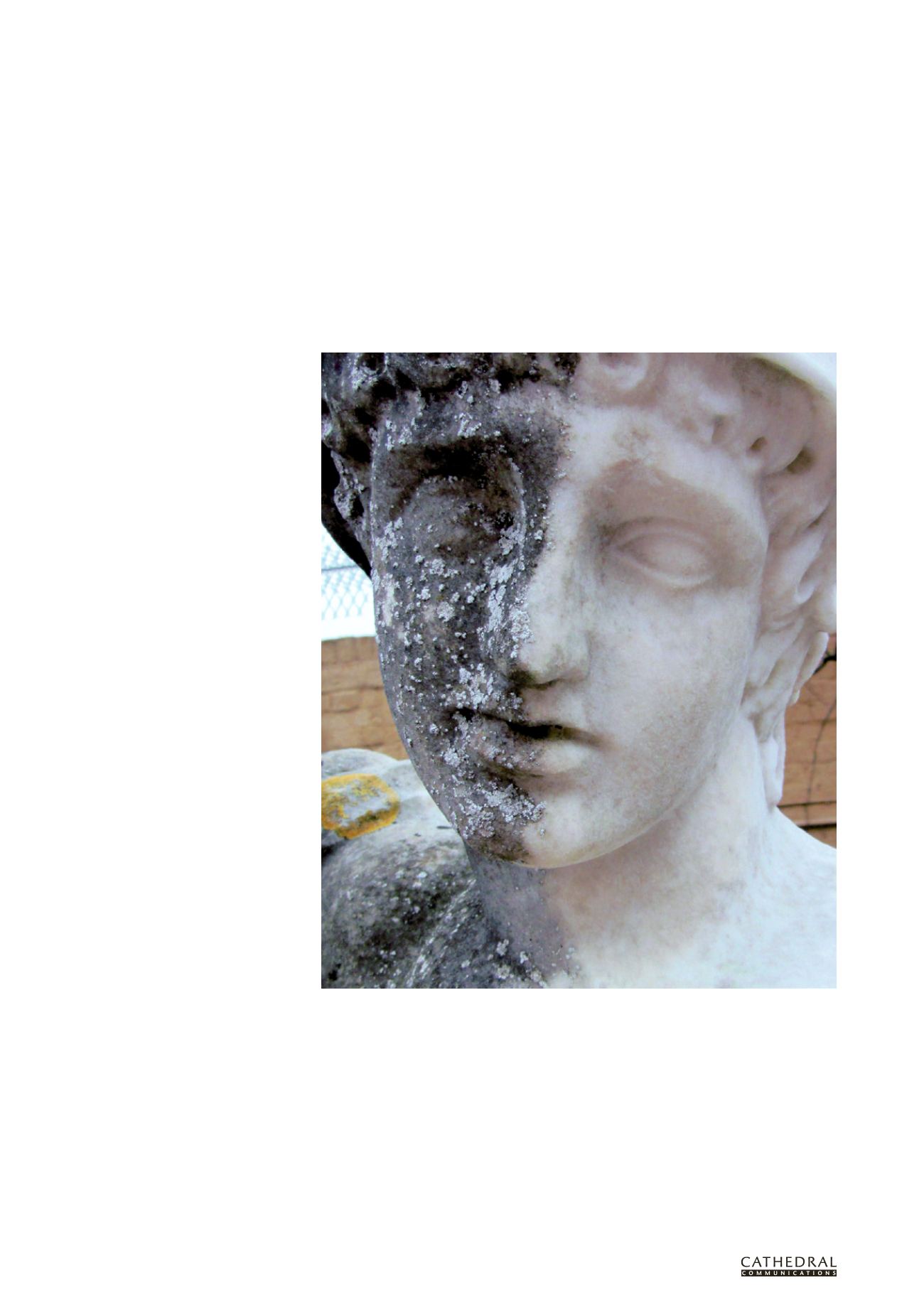
1 3 6
T H E B U I L D I N G C O N S E R VAT I O N D I R E C T O R Y 2 0 1 4
T W E N T Y F I R S T E D I T I O N
SERVICES & TREATMENT :
PROTEC TION & REMEDIAL TREATMENT
4.1
CLEANINGMARBLE
MONUMENTS
ANGUS LAWRENCE
M
ARBLE HAS
long been an important
material for sculpture and
monumental compositions, notably
in religious settings. Whether related to a
significant event or as a mark of remembrance,
a monument will often become an important
focal element in an architectural space.
As with all natural materials, marble
is prone to varying degrees of soiling and
deterioration which in turn can be detrimental
to the appearance and appreciation of a
piece, detracting from its significance as
a work of art. Therefore cleaning aimed at
refreshing or restoring a marble surface is
often considered appropriate. As soiling
may also hide evidence of deterioration,
cleaning is often carried out as a precursor
to conservation and repair work, in order to
fully understand the condition of the piece.
Cleaning, then, often forms a necessary
and desirable part of a well-designed
conservation specification. This should
involve the simple removal of damaging
or disfiguring deposits from the surface.
However, cleaning is an irreversible
process and so the choice and application
of the right materials and techniques are
vital. Well-intentioned but damaging
cleaning has sometimes been carried out
in the past with the use of inappropriate
processes, tools and materials.
Faced with an ever-expanding group
of specialist marble cleaning products
(in the form of powders, liquids, gels,
pastes, etc) it is important to approach
the cleaning of marble monuments with
sound conservation principles and an
awareness that a historic marble surface
should be properly examined and assessed
before any programme of cleaning.
THE MATERIAL
Marble (from the Greek marmaros meaning
a white, shining stone) is a metamorphic
rock formed from limestone (CaCO
₃
) which
has been broken down under pressure and
heat to recrystallise and produce a granular
mosaic of calcite crystals of roughly equal size.
During this process, the original sedimentary
elements of a limestone are lost and a pure
marble is therefore monomineralic, free from
fossils and white in colour. The vast range of
coloured marbles is a consequence of small
amounts of impurities being incorporated
with the calcite during this metamorphism.
Marbles are found across the globe but
the best known and most desirable come from
Italy, Greece and Turkey. There are a handful
of true British and Irish marbles, but they are
relatively rare and most are only of geological
interest. Most notable are the rocks from the
Scottish islands of Iona, Skye and Tiree and
Connemara Marble from the west coast of
Ireland. Other stones that take a polish, such
as Purbeck, are often called marbles but are
in fact largely fossiliferous limestones, shale
stones and other varieties.
Eroded and soiled garden statuary marble, half of which has been cleaned using a controlled nebulous spray system
HISTORY AND USE
Since indigenous marbles are both difficult
to quarry and largely unsuitable for carving,
marbles from abroad have been an important
decorative and sculptural material in Britain
since the Roman occupation. Although the
architecture of ancient Rome is equated in
the popular mind with the use of marble,
the Roman buildings of Britain consisted
mainly of timber, local building stones,
and fired terracotta bricks and tiles, all
cemented together with lime mortars and


